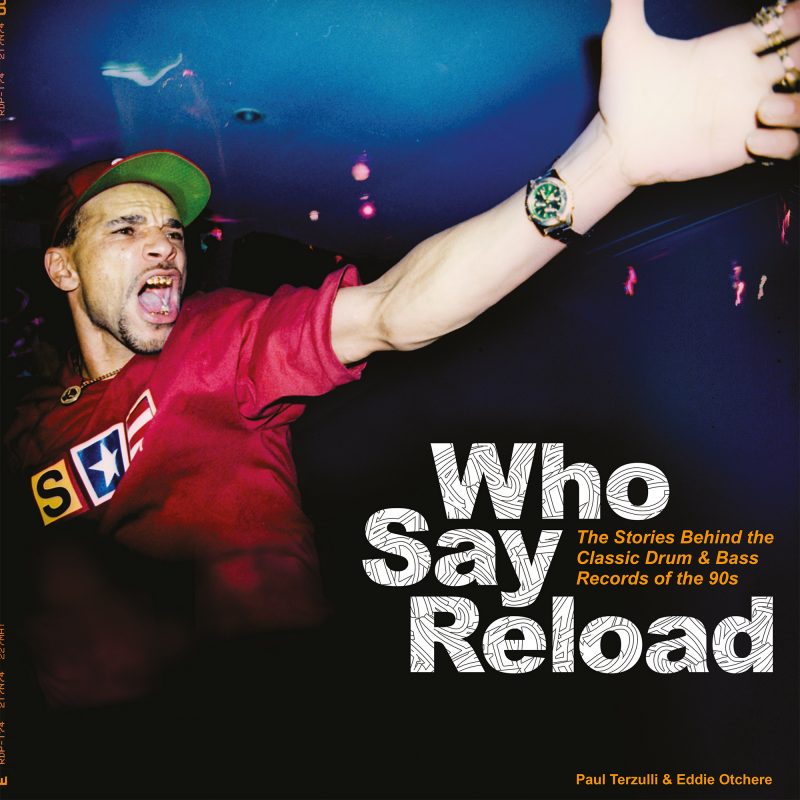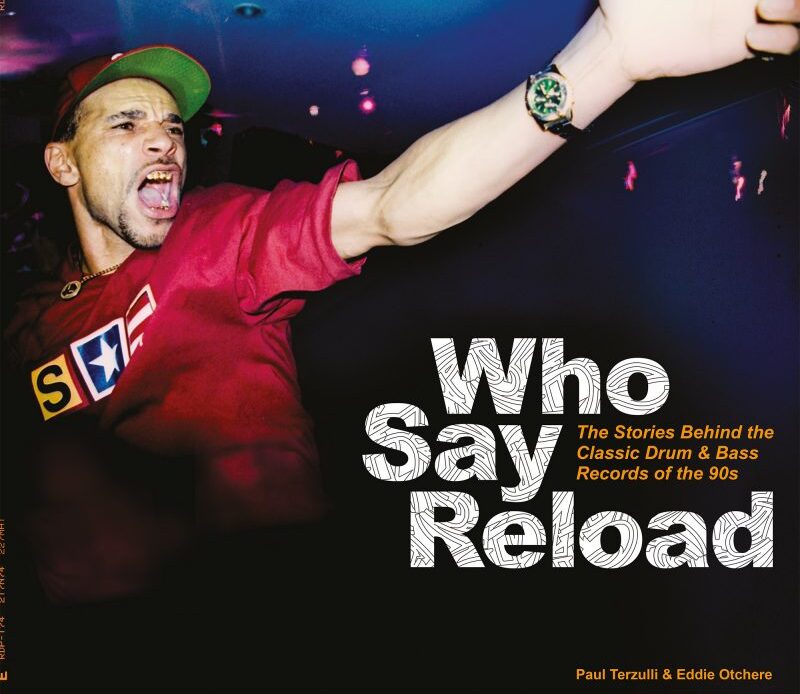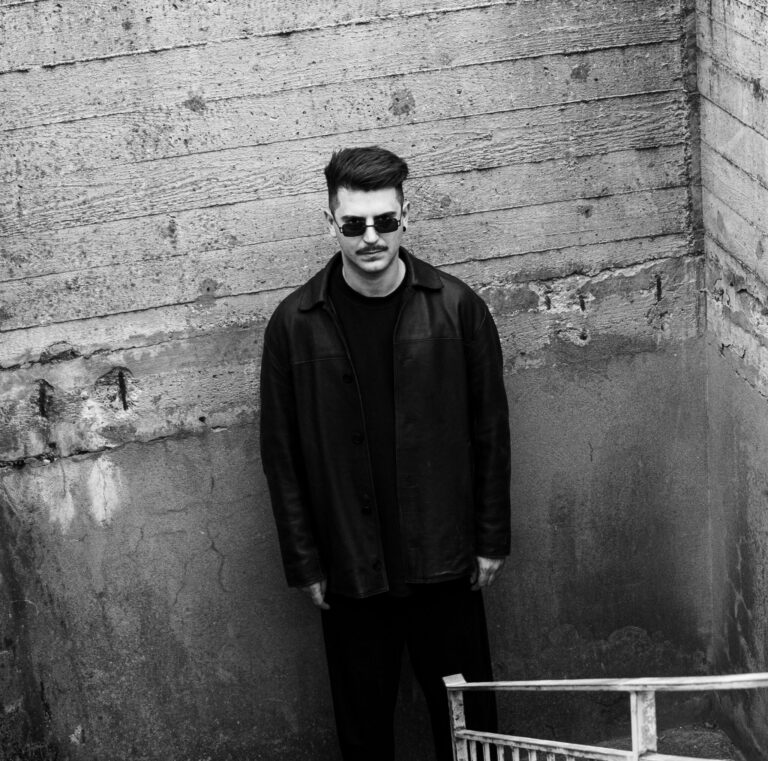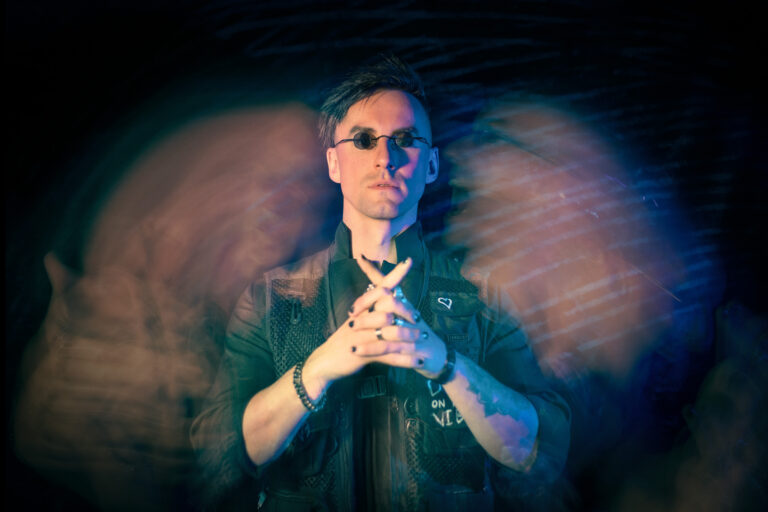As we wrap up our Black History Month series, we’re looking back on what’s been an incredible journey through the roots of bass music. Partnering with Velocity Press has been eye-opening, and we’ve loved every second of diving into the rich, powerful history behind the sounds that move us. Huge thanks to Velocity Press.
This week’s extract is from Who Say Reload by Paul Terzulli, an epic oral history that puts you right in the studio with the legends of jungle and drum and bass. Through the voices of Goldie, DJ Hype, Roni Size, Andy C, 4 Hero, and more, Who Say Reload explores the sounds, samples, machines, and creative energy that fueled some of the most iconic records in jungle and drum and bass. It’s the ultimate insight into the influences, environment, and happy accidents behind each classic.

An Extract From Who Say Reload by Paul Terzulli
Ragga Twins – Spliffhead (Shut Up & Dance Records, 1990)
Much is made of the influence of reggae sound systems in the history of drum n bass. The Ragga Twins are where that crossover begins. Performing for various sounds around London during the 80s, Flinty Badman and Deman Rocker linked up with Shut Up & Dance and the turn of the decade and 1990 saw the release of the ground-breaking Spliffhead, a fusion of uptempo breaks and reggae that gave birth to a whole new era in British music…
Flinty: We had been part of a reggae sound system called Unity but in 1989 we decided that would be our last year on the sound as we weren’t releasing enough records and we wanted to do more in the studio. We didn’t think we’d end up doing acid house music though. That was when Smiley from Shut Up & Dance came to see us as he had sampled Deman’s voice from a tape of the sound system for their track Lamborghini. He asked us what he could do in return for using the sample.
We already knew them as we went to primary school with PJ, and Smiley had a sound system that played against us when we were teenagers. When they met Deman, he said he was going to bring me in with him and we went into it wanting to be solo artists: Deman Rocker and Flinty Badman each doing our own tunes. It was their idea for us to come together as a joint act. They had been in the game for a couple of years and had some big tunes, so we went with it and came up with the name Ragga Twins.
We weren’t into their music to begin with. We had heard about acid house, and it was in the news at the time but all we knew was that there were people taking ecstasy and having a good time! A few of our mates were going out and didn’t know about our tunes with Shut Up & Dance so they’d be telling us they heard our voices in the raves. We didn’t even know they were being played at that point. When we first started doing PAs we would leave straight after and end up at a reggae dance or just go home. We weren’t sticking around to hear the music, but one day there was a show at the Essex County Show Ground with us and The Prodigy headlining. It was an outdoor event and a nice sunny day so we decided to stay and see what it was all about. We ended up staying until the end; no Es, just smoked weed and danced the night away. I think it finished at 6am. From then on we didn’t look back, I think we were going raving every weekend.
PJ and Smiley would do all the tracks. They had already done 5, 6, 7, 8 and Dance Before The Police Come before we got there so as far as we were concerned they knew what they were doing, and we didn’t get involved with any of the music side, we just came in as vocalists. We had a mix of new lyrics and some stuff from when we were chatting on the sound. As reggae MCs we wrote lyrics and would chat them live over a certain riddim; then what would happen is you would get that riddim and release it on vinyl because people are feeling it when they hear it in the dance every week. So that was how we worked when we came over to Shut Up & Dance; we had lyrics people knew from the raves when we were freestyling, so then we can put it on a record. For Ragga Trip, Deman already had the lyrics about acid raves and ecstasy tablets so that fit in well with what we were doing.
It opened up a whole new audience for us, and it also opened up a whole new audience for reggae music. People wanted to know where the samples were coming from. They started to feel reggae music which was predominantly black people’s music. The kids in the suburbs didn’t have sound systems where they lived so when they started to hear us it was like a blessing for them and something different. We didn’t even realise how big it was and then the album [Reggae Owes Me Money] got to number 26 in the national charts. At the time we were fresh into learning how the music industry works. Back in the 80s when we were doing reggae you would release the tune and wouldn’t see the producer again, you didn’t get no royalty statement, nothing!
When PJ and Smiley ran into problems with Raving I’m Raving [the duo were subject to legal action by US singer Marc Cohn for sampling his song Walking In Memphis without permission] they got hit hard in the pocket and that put a stop to our second album. They told us they couldn’t afford to release it so we parted ways and signed to Positiva/EMI in 1994. There was a group called US3 who had a big hit with a track called Cantaloop, and they started doing some production for us. We did a few demos and Positiva liked what they heard. It wasn’t their usual thing but they said they could work it, but in the end, they couldn’t! It was a good album, people loved it and the build-up to releasing it was on point but for some reason, they held it back and then by the time they put it out, the hype had died down. That was another learning experience for us and we decided once that contract had run out we wouldn’t stay with them.
Through that time we were still going to jungle raves and performing as MCs. The label didn’t like it and told us we shouldn’t do it. We tried to tell them we had a big fan base in that scene and that’s what we should use but they had different ideas. They did some remixes but we should’ve had an original jungle track at that time. With EMI’s backing, it could’ve been big but they had other ideas. Nick Halkes [Positiva label manager] is a good guy though and we still talk. Later on, they ended up putting out some jungle tunes. We were always ahead of our time.
In the early days, around 1992, MCs would mostly just host and be behind the DJ. Me and my brother would go to Roast and would just grab the mic and go to the front of the stage like we would in reggae, and that started the evolution of the MC being a frontman. We did Kool FM which was owned by Eastman who had a sound system back in the day, so that connection was there already. We went up to the station with Navigator and started chatting over the beats and people that knew us from reggae would start locking in to Kool. A good jungle scene started developing and there were more black people coming to the raves and more producers were using reggae samples. We were bringing the wheel-ups and reggae slang. We definitely had a big influence in building the scene on the MC side of things.
I had no idea those early tunes would do that type of damage and still be doing damage now, thirty years on, and people still love that album. When we first came out, we had no idea it would have an impact like that. Respect goes to Shut Up & Dance.
PJ from Shut Up & Dance: We were listening to hip hop like early Marley Marl, LL Cool J, Whodini, Run DMC, Kool G Rap, Big Daddy Kane and a lot of Public Enemy. We were really into the Bomb Squad’s production. We had a sound system called Heatwave at the time and we played all different kinds of music. We played reggae and rare groove, and then when hip hop took the UK by storm, we went out and bought some Technics. We had DJ Hype on the decks cutting it up with me and Smiley rapping over the top and Smiley’s brother Daddy Earl is a reggae MC so he’d be up there too. We had love for all types of music and when we moved into production we carried on with that and experimented and put it all in the mix.
We had a few studio sessions where we tried out some engineers but none of them were really any good. One day we worked with a guy called Alex, and he went on to be our engineer for years. He showed us the ropes on the technical side but as far as how to put tunes together, we just learned as we went along. This was in the late 80s and we weren’t getting any love from the UK hip hop scene. There were stations like LWR and Dave Pearce had his rap show, and there was Westwood. We’d send in our demos, but they wouldn’t play it, so we got fed up and decided to put out a tune out ourselves, which was 5, 6, 7, 8. We pressed up 500 copies and drove around the West End and left a box in each record shop.
Smiley had a younger brother who was a raver, which we weren’t into at the time, and he told us that 5, 6, 7, 8 was getting caned in some club. That club turned out to be Dungeons on Lea Bridge Road in East London, so we went down there and the tune got played and it smashed it. It just tore the place down and we realised that we had something.
That went well and once we had that heat DJs would come to us asking for an exclusive on our next tune, or trying to get it upfront before it hit the shops. Obviously, Hype got a lot of our stuff before anyone else. Really it was the pirate stations that made us; we were lucky we got a lot of love there as they were very important in getting the music out to the people. Back in the day, you could tune across the FM dial and with every turn you’d find another station. There must have been 20 to 30 pirate stations and they’d all be playing our stuff.
After our first couple of singles, we started hearing what people like 4 Hero and Rebel MC were doing. As we’d been so influenced by hip hop, we had this whole breakbeat sound and we wanted it to be danceable so we started speeding the breaks up. We didn’t just want slow b-boy rap because we’d been into body popping and breaking. We wanted something a bit faster.
We didn’t really like the piano stuff. We liked the odd tune but on the whole, we kind of hated it. We decided we’d do our thing with raw breaks and very reggae-influenced basslines and melodies. That’s how we came to sign the Ragga Twins. We knew them from the sound system days and as our production went more in that reggae direction we thought we should try to use some reggae MCs. At the time it was just an experiment as no one was doing anything like that. The records we made with Ragga Twins are definitely the first things we made that had a direct influence on what would become jungle music. We were the first to fuse sped up breakbeats with reggae vocals, and when our sound became big people started to copy that.
As we got more successful money was coming in, and we had a licence to be more experimental with the music, so we ended up signing Nicolette which was more jazz-influenced. We held an audition at our studio one day and she came down. She was from Cardiff but happened to be in London. She sang Summertime by Billie Holiday over a raw breakbeat production and we realised we had something. We would experiment with each artist and try and show a different side of us. The soulful side, the jazzy side, the reggae side. That’s what it was all about.
We made the decision to stay working in the studio producing music rather than trying to DJ at the same time. That kind of helped the Ragga Twins get big as when people wanted to book us we’d send them out instead, and it meant people could put a face to the music.
We’d go along to the raves with Hype. As a producer, you have to go out and see what your tune is doing and what the vibe is. As we moved into that jungle era, we set up a sister label called Red Light which was initially just to give Hype dubplates. If he was playing at Fever or wherever that weekend we’d have a dubplate ready for him to collect on the Friday. Then people started coming to us asking what the tunes were so we started putting them out but it was very limited edition and very low key.
Obviously, at the time we were aware people were beginning to copy our sound, but then we really noticed our influence years later when DJs and producers tell us they got into this because of Shut Up & Dance. Some of these people are big names now but the first record they bought was one of ours. When we look back we realise we were part of something and we were literally there at the start, and that it was something unique that came out of the UK.


